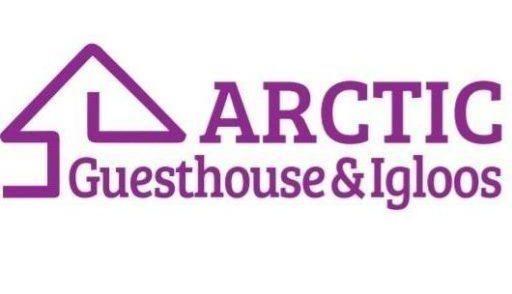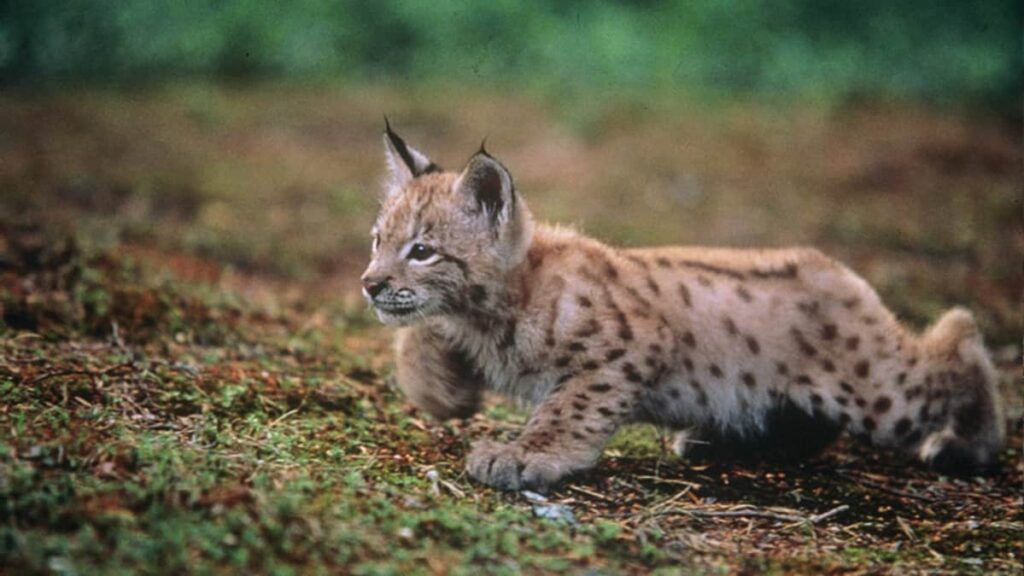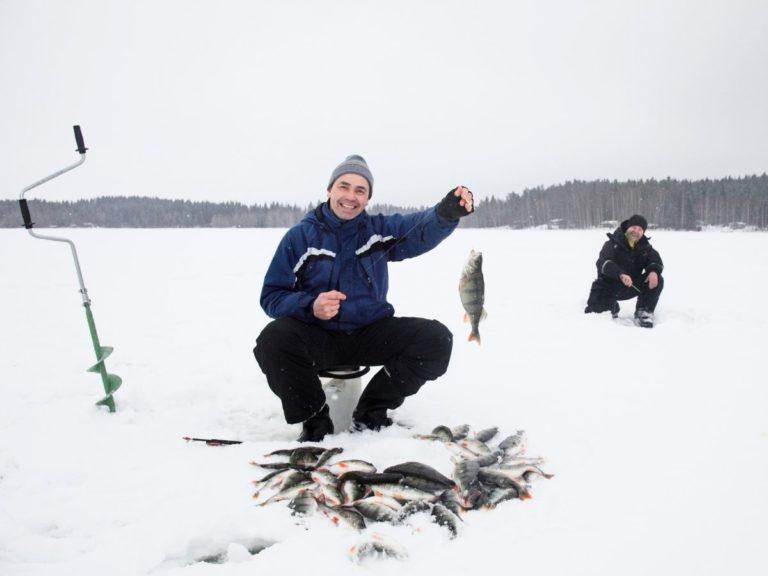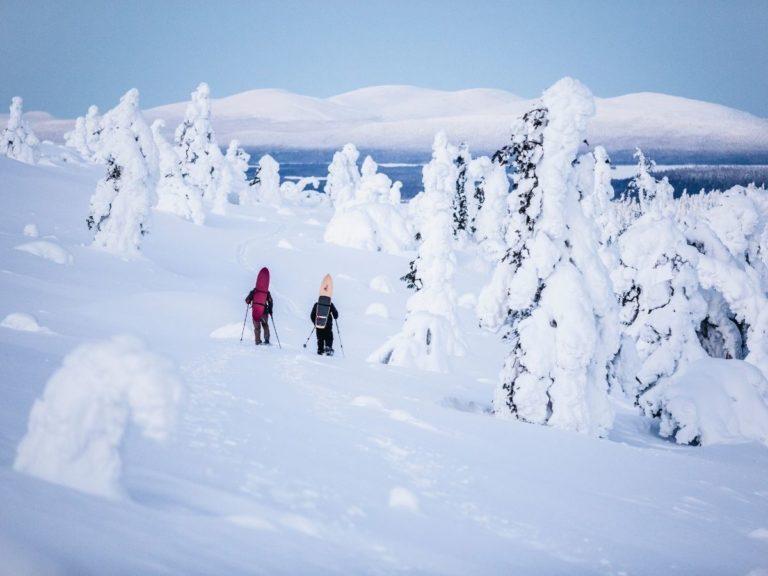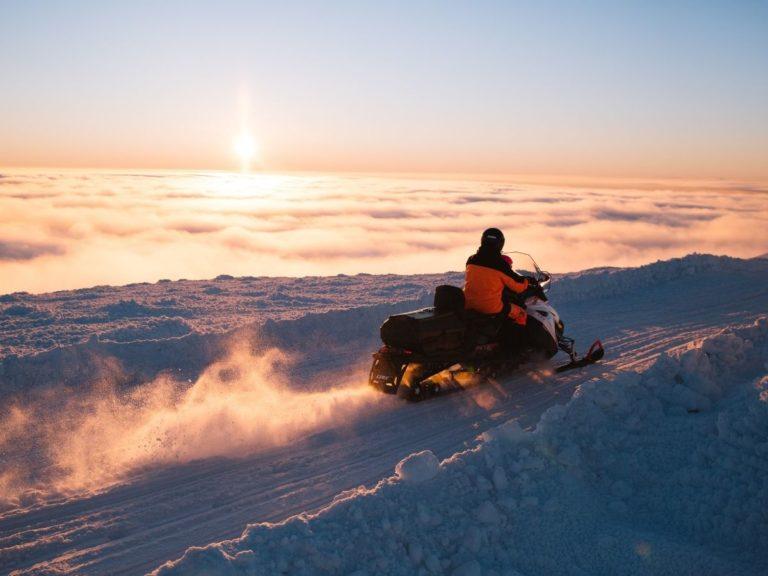Facts about places
1. There was a submarine business in Ranua at the end of 1980s and beginning of 90s. While this truly bold and even overbearing experiment eventually ended in disappointment and mainly only memories of that time remain, concrete things from those times also remain. Of these, e.g. The Ranua submarine terminal, which returned to operation in the mid-2010s, as well as the newer main building of our inn, which was built in the late 1980s precisely due to the demand for accommodation due to submarine tourism.
2. Names of the submarines were Golden Trout and Golden Salmon. The business itself was owned by Suomen Sukellusvenematkat Oy (Finland’s Submarine Journeys).
3. There are also several tomb islands in lake Simojärvi, which have been used, as their name implies, to bury the dead. The custom was common before church lands became more common because the journeys to church were long. The burials were mostly temporary – the deceased were buried on the islands during the hailstorm and in the summer heat, usually waiting for the winter transport to the blessed church land and the final resting place. However, this did not always happen, and for some of the deceased, the islands also remained the final resting places.
4. The cemetery festival held at Simojärvi Cemetery is one of the longest-running events in our municipality, as it has been held continuously since 1936.
5. In the 1980s, the northernmost motorway in the world was planned for Ranua in the vicinity of the airport. Eventually, the collapsed plan was machined by the Ranua motorcycle club.
6. In Ranua you will find a water body with a very beautiful name called “Asshole Pond” (Persesilmälampi in Finnish). The last time the pond received much national attention was in 2018, when Juha Vuorinen, known as a writer and radio columnist, mentioned this fact in the comments of the Instagram update of the social partner Paris Hilton.
7. The Ranua municipal center was originally designed for Lake Saukkojärvi, where the first primary school in Ranua was also established in 1894.
8. In the center of the village of Ranua you will find a market called Cloudberry Market (Hillatori). In addition to berry sales, the market hosts market day events, especially in summer, which include e.g. weekly market days, a harvest market, and a cranberry fair in the fall.
9. Fazer’s candy store, located in MurrMurr Castle in Ranua Zoo, is a standard stop for many passers-by. However, Ranua has also had a Fazer confectionery factory, which was built in 1987-88 in connection with Ranua Zoo. The factory closed its doors for reasons of economy in 1999, after which the factory’s production moved to Lappeenranta.
10. There is also a small piece of Japan in Ranua, as Japan house was built in the middle of Lapland’s nature, close to Lake Simojärvi, in cooperation with Ranua’s Japanese friendship town Iwasakimura in 1998. At Japanitalo, visitors have the opportunity to learn more about Japanese culture.
11. Our another friendship town is the Norwegian Balsfjord.
12. There are many monuments of the World War and the War of Independence in Ranua. These include the Kivitaipale Battle Memorial, the Lapland War Evacuees Memorial “Crying Stones”, the Lapland War Pioneers, the Hero Memorial “Not Death but Life”, the Saukkojärvi Hero Memorial, the Simojärvi Hero Memorial, and the War of Independence Memorial near Ranua Church.
13. The Simojoki (Simo River), which flows through Ranua, is one of the few free-flowing salmon in Finland. One of the most controversial things about the river and its salmon stock is that salmon have been said to have risen in recent decades all the way to Lake Simojärvi, which is the source of the river. Today, the rise of salmon stops in the area of your main Portimonjärvi and Saukkojärvi, and salmon sightings above this are very rare.
14. Ranua has at least three different museums. In the center of Kirkonkylä is the Priest and Parish Museum, which presents the life of a rural priest in the 1930s and 40s. The rectory in Miekkaniemi was built in the early 20th century. Another official museum is the Saukkojärvi Homeland and School Museum, where it is possible to get acquainted with the life of a 1930-40 century peasant school. Vintti has an exhibition of the local history museum that tells more about the history of Ranua. A private chainsaw museum is located in Portimojärvi.
Events in Ranua
15. The Golden Brown Trout, already mentioned in connection with submarines, is also remembered for the trolling competition held between 1986 and 2010. The rowing competition was actively marketed by various organizations and in the best year more than 500 crews took part in the competition.
16. Religious event Opistoseurat has been organized in Ranua for 30 years and today the event attracts about 20 thousand visitors to the place every year. The clubs are held annually on the last weekend of July in the Ranua Christian Folk High School area.
17. On the first weekend of August, the Ranua Cloudberry Festival (Hillamarkkinat) will be held. The market event, which started from a modest beginning in -74, has over the years grown into a large folk festival, one of the main products of which is, of course, Ranian hilla. In addition to Hill, the event includes a varied market trade and a variety of side programs. Lions Club Ranua is responsible for arranging the event.
18. Ranua has also held the Finnish Championships in cloudberry picking, at least in 1992, when the competition was held during the Cloudberry Festival.
Today, in the context of the Cloudberry Festival, the Hillabalooza beach volleyball event is held annually, for the first time under its current name in 2009.
19. In the late 1990s, Ranua was also once again nominated for the title of the strongest cloudberry picker.
20. Between 1990 and 2014, Cloudberry Festivals were held in Ranua, bringing together groups in the village for folk dance and other activities from several different countries. The young people from their own village were also allowed to take part in organizing the event, and the week-long international event was a great multinational language bath for local children and young people, which has also led to longer-term contacts.
21. Between 1995 and 2004, Ranua hosted seven large-scale productions based on the Kalevala, written and directed by Viola Malmi. A lot of help was used in the preparations themselves. For example, the large snow structures used in the performances were built by local residents and the majority of the Kalevala actors were from Ranua. Over the years, Kaleva performances were held first on the shores of Lake Ranuanjärvi in Ikosenpuisto and later at Ranua Zoo. Some screenings have also been held at Ranua indoor ice rink.
22. Ranua has also hosted numerous musical events. One of the most iconic is RynkkäRock, held in the small village of Tolja in 1999 – 2001 and in the summer of 2002 at Multilahti beach.
23. There has also been a rally competition in Ranua at least in the form of the Kuoppelikko rally. The event was held once, in 1993.
24. Today, the most significant sporting events in Ranua are the annual Finnish Darts Skiing Championships, the Heinisuo Jog event, which has been held more than 90 times, and the Ranua rinkball tournament.
Movies, TV and music
25. The whole family’s successful film Poika ja Ilves (Tommy and the Wildcat), premiered in 1998, was shot in its entirety in Ranua and Posio Korouoma, and our inn also appears in many scenes of the film.
The second main part of the film was played by the very tame Väinö lynx of Ranua Wildlife Park, who died by accident in May 1998. You can learn more about the story of Väinö, who was abandoned by his mother, on Grandma in Lapland blog.
26. Ranua has had its own TV channel, which used to be called Ranua TV.
27. Of the international public figures, Ranua has been visited by at least Katherine Kelly-Lang, who still plays Brooke in The Bold and the Beautiful, who stopped at Ranua Esso to buy handkerchiefs. In the 1990s, the K.I.T.T car, familiar from Knight rider, was also washed in Esso and was also on display for some time in the yard of the gas station.
28. On the musical side, Ranua is best known for Tapaus Lindell‘s song Planet Ranua, in which Ranua is portrayed as his own planet according to the song’s name. The music video of the song shows both facts related to Ranua and video clips shot in our locality.
29. Ranua has also seen several well-known artists over the decades. At the Peuransarvi Sports Hall, e.g. Hurriganes (1975 and 1981), Danny and Armi, Paula Koivuniemi, Meiju Suvas, Jari Sillanpää, Agents & Jorma Kääriäinen and Ti-Ti bear. The most significant visit of a Finnish artist in recent years was at the 30th anniversary celebrations of Ranua Zoo in the summer of 2013, when Cheek, who was at the peak of his career, gave a concert in Ranua.
Sayings related to Ranua
30. The multifaceted “Brutal Game in Ranua” (Raaka peli Ranualla) is a legendary saying about our locality, which originated from a news headline in the magazine (possibly Koillissanomat) decades ago, which at the time was in the form “Brutal Game in Ranua and a man Killed in Posio”.
31. Another legendary saying related to Ranua is “Brave Ranua”, which has also been the slogan of the municipality of Ranua for decades.
32. Ranua has also been called as a shortcut to Lapland.
33. In the 1970s, Ranua was somewhat vividly described as the center of Finland, from which, leaving in any direction, would only make things better.
History and general knowledge
34. Ranua is as old as an independent Finland. The municipality of Ranua was also founded in 1917. The population of the municipality grew rapidly during the first years, as deforestation and flooding, mainly along the Simojoki River, had a very strong employment effect at that time. Indeed, the population of Ranua grew quite rapidly and at its best, in the late 1960s, the population of Ranua exceeded as many as seven thousand inhabitants.
35. In July 2020, the population of Ranua was 3,741.
36. There is a rather funny meaning to the name of our place “Ranua”. In the municipal history of Ranua, the name is explained to be of Forest Sámi origin and to mean a “non-habitable outlying area”.
37. The Ranua parish, on the other hand, is older than the municipality itself, since the Ranua parish was founded on 8 November 1899 by a decision of the Finnish Imperial Senate. The new parish received the outermost regions of Pudasjärvi, Simon and Rovaniemi parishes. The church meetings of the new parish began in 1900. The area was about 3700 km² and the area was inhabited by less than 2,000 people. The administration was initially carried out by a clerical of ecclesiastical affairs appointed by the Judicial Chapter, usually a chaplain of Pudasjärvi. Ranua Church was consecrated in 1914 by Bishop Juho Koskimies.
38. Ranua is known, at least almost officially, as the Cloudberry Town throughout Finland. This view is also supported by the terrain of our municipality, which covers almost 60% of its area (just over 2,000 square kilometers). Local knowledge has also been utilized on the side of marsh maps, and information on Ranua’s cloudberry swamps can now be found in the Visit Ranua’s Ranua application, available for both iOS and Android devices.
39. Ranua also has its own currency, known as the Kalakaani. In 1998, the municipal government of Ranua decided that one Kalakaani was equivalent to fifty euros, or about 300 marks at the time. Prior to this, the value of the currency was measured in haystacks and the value of one Kalakaani at that time corresponded to three Posio haystacks.
Kalakaani dates back to the folklore of Ranua. It was originally designed as a gift and promotional item, but municipal salaries were also negotiated on the basis of a fish khan. In 1999, the design of the new bronze fishfish coin was carried out by the artist Erkki Salmela.
40. Ranua has entered the Guinness Book of Records on at least two occasions. The first time a record was set in a lure pull was in 1987, when the Lions Club pulled the lure into the tube in Simojärvi for as many as 16 days. At the Maaseutu Elää (countryside lives) exhibition in the same year, Ranua, on the other hand, baked the world’s longest rieska (traditional Finnish bread), which was as long as 210 meters. Both records are reportedly still valid.
41. Ranua has been a pioneer in the field of education, as in the 1970s Ranua was the first in Finland to switch to primary school. It is also known that the course-shaped high school was first tested in Ranua.
42. Ranua sought to gain world consciousness through Pettu (bark), which was used as a flour during the shortage times period. However, the Pettu project that took place in 1997-99 did not get enough of the wind and the world remained unconquered, at least for the time being. However, since the project, more than 300 pets have been trained in Finland, ie the master of disappointment, and deception still plays a very significant role as a historical experience product for restaurant and tourism companies.
Sports and people
43. Leo Kuusela, “the organic man” who practiced organic farming in Portimo, could be described as a real pioneer of his time, where you can find an interesting story made in the mid-80s on Yle’s website.
44. Local amateur sports team Maakunnan Pallo Ry is a two-time world champion in swamp football. The World Championships were won 2009 and 2011. In 2007 and 2008, the team won bronze medals.
45. In the field of sports, there has also been international success, and there are also more medalists. Taina Itkonen (o.s. Impiö), who won gold in cross-country skiing women’s relay at the Lahti World Championships in 1978. Itkonen was born in Ranua and represented Ranua Peura during her active career. On the power lifting side, Eila and Veli Kumpuniemi have won hundreds of Finnish Championships and international medals, and set several world records. Jouko Kuha, who won the World Championship gold championship in Tokyo in 1967, was born in Ranua. Kalevi Majova has won several Finnish Championship golds in darts during his long career, as well as being the only Finn to win the Nordic Championship. Majova’s 50 dart record is rock hard: 440 points. On the volleyball side, Körkkö brothers Kari and Raimo, who reached the national team level, have had the greatest success.
Looking to the future, it is worth remembering at least the name of Kasper Simontaival. The Tappara forward, who celebrated the World Championship bronze in the ranks of the Finland U20 National team, has his own roots in Ranua through his father. Among the athletes from Ranua, it is also worth following Jenna Pirttijärvi, who has quickly become one of the most important players of RoKi’s women’s team and all the way to the national team’s training camps.
46. Ranua’s largest single sports club is Ranuan Peura, founded in 1913, which has reaped success in recent decades, e.g. on the hockey, athletics, volleyball and skiing side. Outside of our locality, the name has aroused both astonishment and amusement because of the shorter version of the name. The name of the sports club has also taken many different forms, the most famous of which is probably Rannan Penra, with which locals have participated in at least the Kultavaskooli volleyball tournament.
47. The most famous of the parliamentarians from Ranua is Kalle Aukusti Lohi (1872 – 1948), who grew up in the village of Kuukasjärvi, which still belonged to Pudasjärvi at that time. A statue of Salmon, who died in Ranua, has been constructed in the center of Ranua village.
48. In 1989, Ben Johnson, a Canadian 100-meter sprint world record holder, stopped by at Ranua Zoo to eat salmon soup.
49. The best known of Ranual’s visual artists is probably Erkki Salmela, born in 1958, whose works are on display in many public collections (Newspaper Lapin Kansa, Ranua Municipality, Finnish Medal Art Guild, Mint, Finnish State and Finnish National Museum). At the national level, Salmela’s best-known works are at least the 75th anniversary commemorative coin of Finnish independence from 1991 and the commemorative coin from Paavo Nurmi and sports from 1997.
50. In connection with the Cloudberry Fair, Berry Doctor and Cloudberry girl are elected annually in Ranua. During the cranberry festival, Cranberry of the Year is chosen.
Ending speech
At the end of the text, I would like to give a big thank you to the Ranua Facebook group, which was also really helpful in writing this text. The current text is not final, but I would also like to add new stuff to this list, which you can send me by e-mail to: [email protected].
